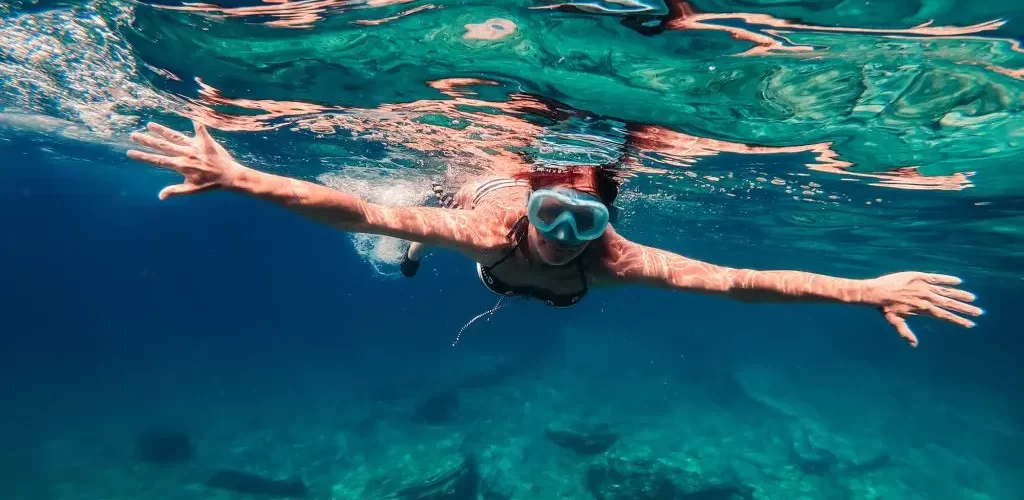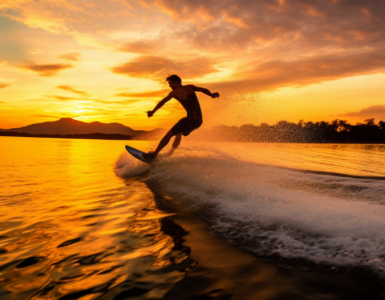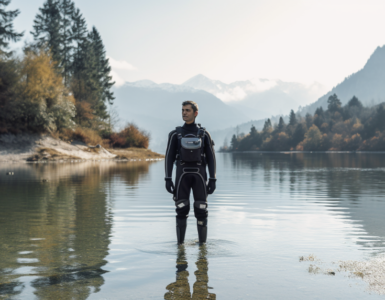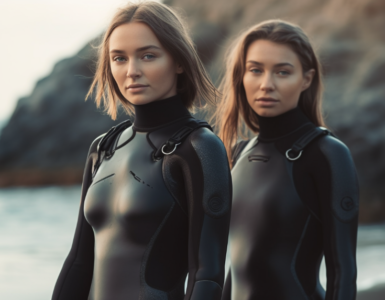The open ocean is one of the most mysterious and interesting things to explore for us humans. And, there are many ways we can enjoy nature’s bountiful gift, too, such as by snorkeling, scuba diving, freediving, and skin diving.
That said, not everyone knows the difference between these underwater sports. To give you an idea, skin diving involves holding your breath or using a snorkel while staying underwater, making it quite similar to both snorkeling and freediving. But, these two also largely differ from each other, and even from scuba diving.
Even this loose definition is oversimplified and doesn’t quite capture the essence of these underwater activities. So, to give you a better idea of what makes each of these sports different from each other, here’s a comprehensive guide on the differences between skin diving, scuba diving, snorkeling, and freediving.
What is Skin Diving?
First of all, what is skin diving? Skin diving is essentially a more advanced form of snorkeling, wherein divers also use snorkels to breathe underwater, but unlike snorkeling, the purpose of skin diving is to dive deeper into the water, stay down, and explore the marine life at a much closer look.
In fact, skin divers can reach depths of 16 to 32 feet or 5 to 10 meters, and they can last underwater for about 30 seconds at a maximum.
Other differences from snorkeling include not wearing lifejackets in order to be able to “sink” in the water, and the emphasis of having a skin diving buddy for safety purposes, since the diver goes under the surface with nothing more than a snorkel.
Read this article on the world’s best places to skin dive.
Equipment
Aside from the snorkel, other equipments used by skin divers include fins and masks. Some skin divers prefer using low-volume masks that can be helpful when descending because these equalize easier. In terms of attire, skin divers wear a wetsuit or a rashguard, as well as a weighted belt.
One important note is to not wear a weighted belt unless you have undergone training and have a good understanding of blackouts and buoyancy.
Certification
Proper training is important to prevent various issues – many of them life-threatening – that can arise once you’re on the water. For instance, if your access to breathing air gets cut off while you’re underwater, and you are not able to hold your breath or break through the surface in time, you can experience asphyxia.
This, and other risks, largely depend on your skill as a diver, as well as the duration, shape, and depth of the diving profile. Fortunately, there are many types of training courses for skin diving, some of which can even be executed on land.
What is Scuba Diving?
Now that we’ve tackled the skin diving definition, let us move on to the definition of scuba diving.
“Scuba” is short for “Self Contained Underwater Breathing Apparatus”. It’s an old terminology that refers to the use of a regulator and a scuba tank. If you are breathing on a mouthpiece that is connected to the tank on your back, then basically, you are scuba diving.
Keep in mind that you have to undergo special training and attain a license or certification before scuba diving. Wearing a mask is also a must for you to see clearly while diving underwater, as well as fins that will help you propel yourself on water, and a BCD that can control buoyancy.
Aside from that, it’s also a must to wear dive clothing that offers exposure protection, like rash-guards for tropical weather, wetsuits for temperate climates, or drysuits for colder temperatures. It’s also common to wear boots for added protection, which means having bungees or heel straps on your fins.
Equipment
While scuba diving, it is a must to have all the equipment you will be needing. First and foremost, make sure you have your tank and know how to use it properly. You also need to wear a wetsuit, mask, fins, diving socks and gloves, lead weights, and a weighted belt.
It’s also important to carry a BC/BCD and a regulator, compass, submersible pressure gauge, depth gauge, and a dive watch.
Certification
Before you can attempt scuba diving, you have to be certified for the sport first. For those who do not know, a license for scuba diving is a must. So, do not risk doing it without proper training and certification. A big part of scuba diving is ensuring the diver’s safety, and for that to happen, several rules must be followed.
What is Snorkeling?
As for the difference between skin and scuba diving and snorkeling, snorkeling is basically
floating or on-the-surface swimming. It’s a relatively easy activity that anyone can engage in since it can be done even by non-swimmers as long as a PFD is worn. This ease and accessibility is the reason why it’s the most popular water activities around the globe.
While there are certain limitations to snorkeling, such as not being able to go certain depths, these can also be seen as advantages. For one thing, you don’t have to go far from the shore (nor far from the water surface) to be able to see and enjoy the bustling marine and coral life.
Equipment
If you are planning to snorkel, it is important that you still have the proper equipment first. These include the snorkel, a mask, short full-coverage snorkel fins, a wetsuit or rashguard for exposure protection (this is important since you’ll be close to the surface), and an optional lifevest.
Certification
Unlike scuba diving, skin diving, and freediving, there is no need to obtain a certification or license to be able to go snorkeling. However, it’s always a good idea to at least have a cursory introduction to the proper use of snorkel equipment and snorkeling etiquette.
What is Freediving?
Freediving is a competitive underwater sport that involves lots of theory, training, and safety protocols. As opposed to scuba diving and snorkeling, freediving is typically performed in a swimming pool, whether by floating, swimming horizontally, or diving vertically- and doing all of these in a single intake of breath.
The point here is to explore, challenge, and push limits as to how deep you can go and how long you can stay underwater. As such, it is a must to practice your breathing techniques, learn how to conserve oxygen, know how to listen and work with your body, work on mindfulness and relaxation, all while doing it in a safe, controlled environment.
Check out this article on the deepest freedive ever, or this one about the world’s longest time holding breath.
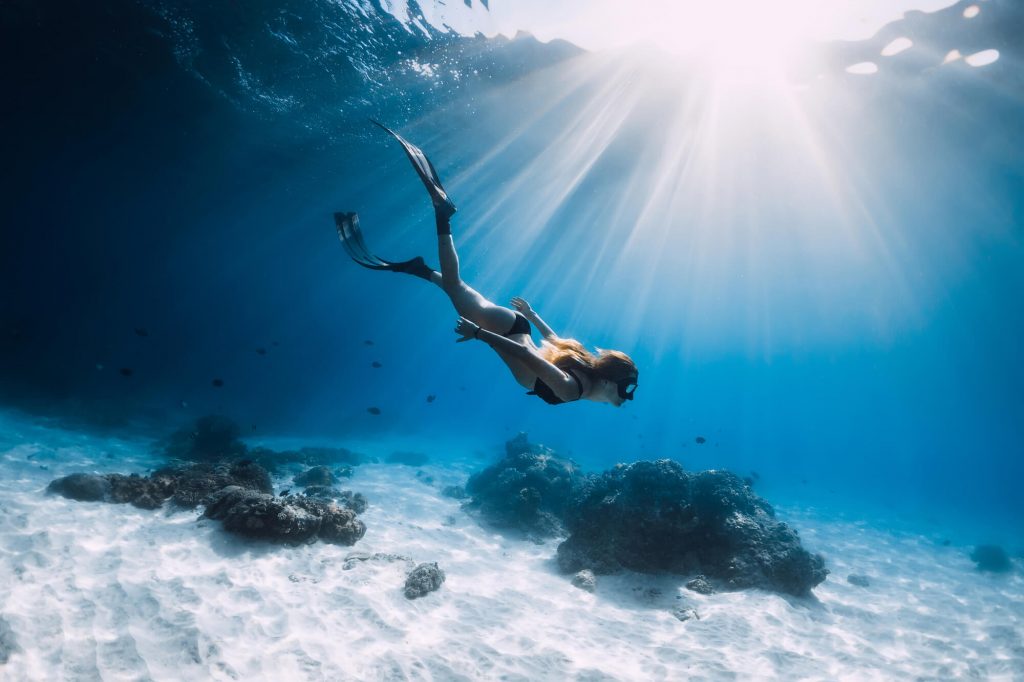
Equipment
Being a complicated water sport, there are a lot of safety equipment needed to perform freediving, such as low volume masks, weighted belts, snorkels, nose clips, long fins, lanyards, and wetsuits,
Certification
It is highly recommended that before freediving, you have to get a course from an instructor that is qualified. Although there isn’t as much equipment as compared to scuba diving, you have to gain plenty of knowledge first about freediving. After all, that’s the point of the sport- it’s less about equipment and more about working with your body.
A freediving certification course will teach you a lot about techniques, safety protocols, and the risks involved- which, to be honest, can sometimes be fatal. Other hazards include suffering from trauma on the lung, sinus, and ear, as well as decompression sickness and blacking out.
Overview
If you are the kind of person who enjoys exploring and having fun on the water, there are many sports and activities to choose from, such as skin diving, snorkeling, scuba diving, and freediving. We hope that this article has helped you understand the differences between these water sports, and thereby helped you decide which sport you feel will suit you best.

